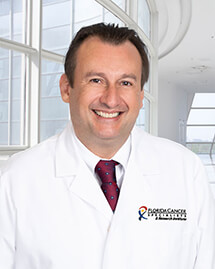Author(s): Michael R. Bishop, M.D., Michael Dickinson, M.B., B.S., D.M.Sci., Duncan Purtill, M.D., M.B., B.S., Pere Barba, M.D., Ph.D., Armando Santoro, M.D., Nada Hamad, M.B., B.S., Koji Kato, M.D., Ph.D., Anna Sureda, M.D., Ph.D., Richard Greil, M.D., Catherine Thieblemont, M.D., Ph.D., Franck Morschhauser, M.D., Ph.D., Martin Janz, M.D., et al.
Author Affiliations
rom the David and Etta Jonas Center for Cellular Therapy, University of Chicago, Chicago (M.R.B.); Peter MacCallum Cancer Centre and Royal Melbourne Hospital, Melbourne, VIC (M. Dickinson), Fiona Stanley Hospital, Murdoch, WA (D.P.), and the Department of Haematology, St. Vincent’s Hospital Sydney, and St. Vincent’s Clinical School, University of New South Wales, Sydney (N.H.) — all in Australia; Hospital Universitari Vall d’Hebron and Universitat Autònoma de Barcelona (P. Barba) and the Clinical Hematology Department, Institut Català d’Oncologia–Hospitalet de Llobregat (A. Sureda), Barcelona, and the Hematology Department, Hospital 12 de Octubre, Complutense University, Instituto de Investigación Hospital 12 de Octubre, Centro Nacional de Investigaciones Oncológicas, Madrid (J.M.-L.) — all in Spain; the Department of Biomedical Sciences, Humanitas University and IRCCS Humanitas Research Hospital–Humanitas Cancer Center, Milan (A. Santoro); the Department of Hematology, Oncology, and Cardiovascular Medicine, Kyushu University Hospital, Fukuoka (K.K.), and Tohoku University Hospital, Sendai (H. Harigae) — both in Japan; the Third Medical Department, Paracelsus Medical University, Salzburg Cancer Research Institute–Center for Clinical Cancer and Immunology Trials and Cancer Cluster Salzburg, Salzburg (R.G.), and Internal Medicine I, Bone Marrow Transplant Unit (W.R.), and the Clinical Division of Hematology and Hemostaseology, Department of Medicine I (U.J.), Vienna General Hospital–Medical University of Vienna, Vienna — both in Austria; Assistance Publique–Hôpitaux de Paris, Hemato-Oncology, Hôpital Saint-Louis, Paris (C.T.), Centre Hospitalier Régional Universitaire de Lille, Lille (F.M.), Hospices Civils de Lyon and Université Claude Bernard Lyon 1, Lyon (E.B.), and Centre de Recherche en Cancérologie et Immunologie Nantes-Angers, INSERM, and Nantes Medical University, Nantes (S.L.G.) — all in France; the Department of Hematology, Oncology, and Tumorimmunology, Charité–University Hospital Berlin, Campus Benjamin Franklin, and the Experimental and Clinical Research Center of the Max Delbrück Center for Molecular Medicine and Charité Berlin, Berlin (M.J.), Medizinische Klinik III, LMU Klinikum, Munich (M. Dreyling), and Clinic I for Internal Medicine, University Hospital Cologne, Cologne (P. Borchmann) — all in Germany; Sarah Cannon Research Institute–Tennessee Oncology, Nashville (I.F., P.M.); the Department of Medicine, Queen Mary Hospital, Hong Kong (Y.-L.K.); the Department of Hematology, Amsterdam UMC, University of Amsterdam, Amsterdam (M.J.K.), and Universitair Medisch Centrum Utrecht, Department of Medical Oncology, Utrecht (M.C.M.) — both in the Netherlands; the Department of Oncology, Oslo University Hospital, and K.G. Jebsen Center for B-Cell Malignancies — both in Oslo (H. Holte); the National University Cancer Institute Singapore, Singapore (E.H.L.C.); the Department of Medical Oncology and Hematology, University Hospital, Zurich (A.M.S.M.), and Novartis Pharma, Basel (S.N., E.D., G.A.) — both in Switzerland; the Center for Hematologic Malignancies, Knight Cancer Institute, Oregon Health and Science University, Portland (R.T.M.); the Division of Hematologic Malignancies and Cellular Therapeutics, University of Kansas Cancer Center, Westwood (J.P.M.); Ohio State University, Columbus (D.B.); Helen Diller Family Comprehensive Cancer Center, University of California, San Francisco, San Francisco (C.A.); the Division of Hematology–Oncology and Blood and Marrow Transplantation and Cellular Therapy Program, Mayo Clinic, Jacksonville, FL (M.K.-D.); Novartis Pharmaceuticals, East Hanover, NJ (R.A., C.C., A.M.); the Lymphoma Program, Abramson Cancer Center, University of Pennsylvania, Philadelphia (S.J.S.); and the Department of Lymphoma and Myeloma, M.D. Anderson Cancer Center, Houston (J.R.W.).
